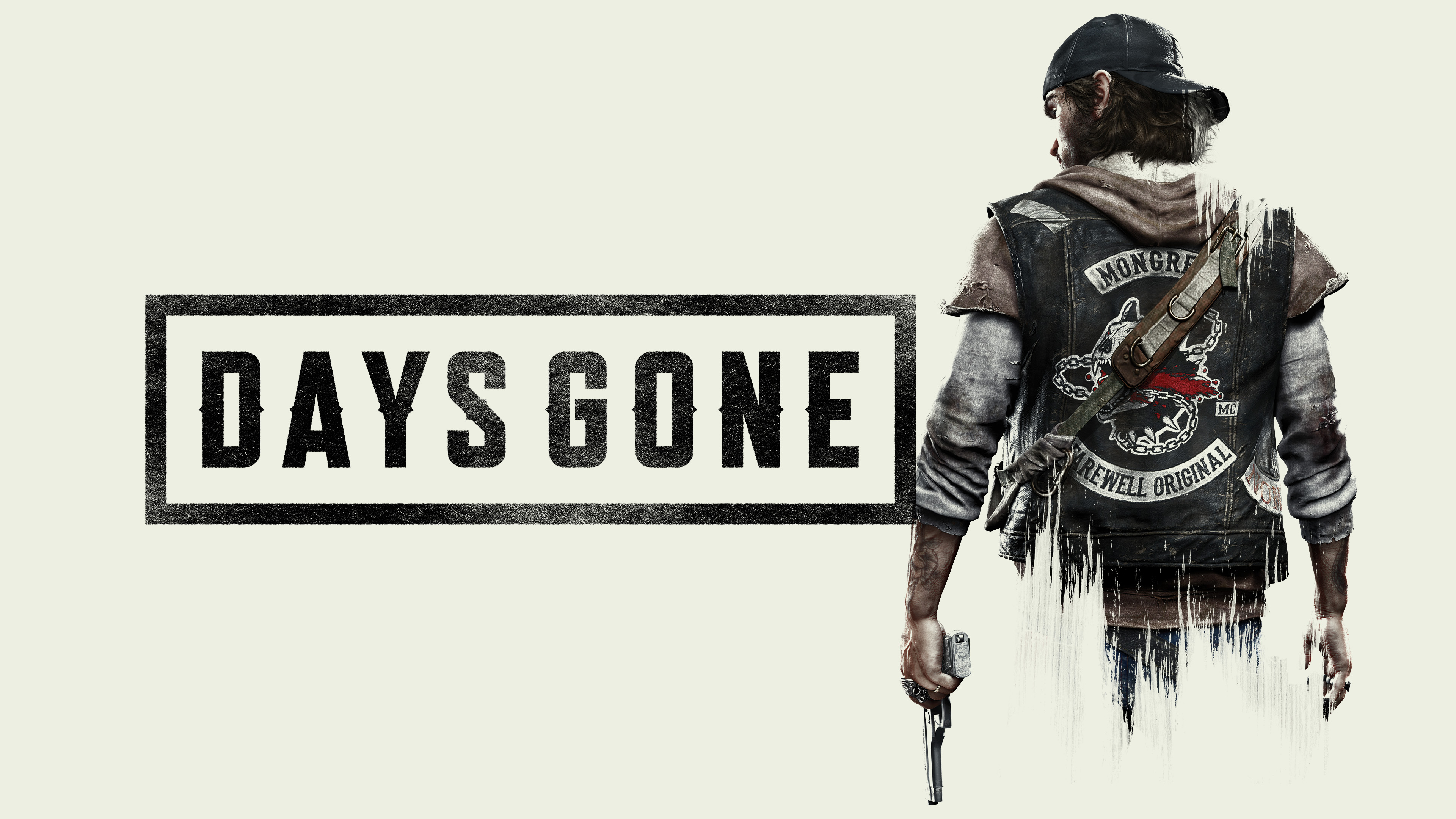Making the decision to develop a new intellectual property means taking a big risk. After all, despite the fact that gaming truly grows through its creators’ new, inventive and downright unique ideas, creating something different from the ground up is a costly proposition. That, as well as a massive risk. There’s no guarantee that the large amounts of money that have been invested will be regained through sales, which is why publishers will often stay with tried and true franchises until they’ve run their courses.
Enter Days Gone, a brand new IP from the folks at Sony’s Bend Studio. A game that combines four of gamers’ favourite things and wraps it up in a biker-focused package. Those things? Guns, zombie-like enemies to shoot them at, an open world to explore and engage with, and a post-apocalyptic setting. The result is a surprisingly lengthy and appreciably entertaining experience, which this reviewer is happy exists.
Days Gone is a good game. In fact, it’s quite good. Not a perfect game, but one that does a lot of things well and delivers building blocks that could be built upon if this is going to turn into a new franchise.
This new, Sony funded PlayStation 4 exclusive, is set in the state of Oregon’s open, tree-filled back roads. There, we find two former members of the Mongrels Motorcycle Club, who’ve managed to survive for two years after an apocalypse scenario took hold of their country. One that just so happens to have been based around some sort of a virus, which has turned living people into zombie-like ‘freakers,’ who want nothing more than to travel in packs in search of human flesh.
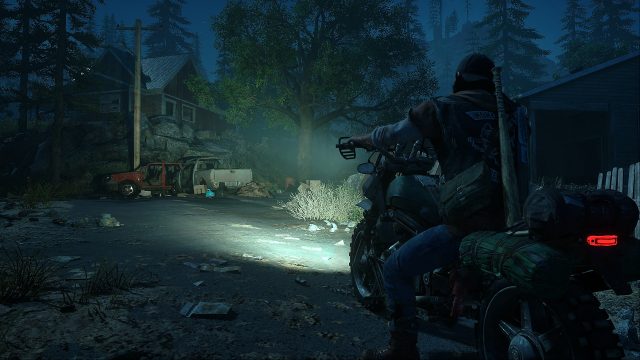
Things pick up on a harrowing day, as Deacon St. John (our controllable protagonist for the next thirty or so hours), his bald and tattooed friend Boozer, and his lovely girlfriend Sarah attempt to survive a dangerous, riot-like situation. Sarah has been hurt, freakers are everywhere, and the only way out is through a near full helicopter that is being manned by some sort of research based organization. The group’s only guaranteed form of survival would come from boarding that chopper, but there’s a problem: It only has room for two. Since Sarah has been hurt and needs help, she gets one spot, but in a moment of friendship and trust, Deacon decides to forego taking the other in favour of staying with and helping Boozer. As he tells Sarah, Boozer wouldn’t survive without him.
Fast-forward to two years later, and the two bikers are out patrolling their wooded surroundings by motorcycle. They’re doing so in search of a bounty, who’s screwed someone over and run off before facing the consequences. Both men are seasoned at this, and have a history of doing such jobs (and other types of runs) for different camps, though they do not live inside of one. In a way, they’re mercenaries or runners, who work to survive, and use the credits they earn to get what they need from each camp’s merchants.
Sarah? She’s presumed dead, after the refugee camp she was taken to was overrun by freakers. Deacon has never forgotten her, and maintains a stone marker in her memory. A gravestone of sorts that he visits and talks to somewhat regularly, which becomes a part of the game’s lengthy campaign.
Deacon isn’t a typical, mean-spirited biker, and nor is Boozer for the most part. They merely do what they have to survive, and try to help people where they can, meaning assisting allies and aiding survivors who’ve found themselves in dangerous situations. They also don’t necessarily agree with how certain camps are being run, or how their leaders treat the people they take in. Most of all, though, they care about each other, and will do anything for one another. Not to mention for Sarah’s beloved memory.
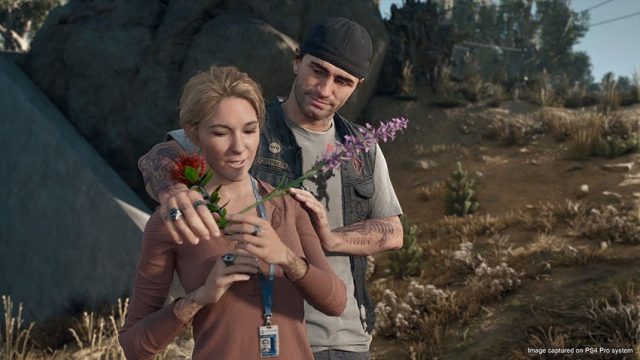
At its core, Days Gone is an open world third-person shooter set within a post-apocalyptic environment. It could also be called a zombie game, even though its enemies aren’t necessarily zombies or even undead. It drops players into an interesting, large and different world, wherein the genre’s typical cityscapes have been exchanged for Oregonian wilderness and the small towns that it borders. This means biking through rugged terrain and navigating past tons of trees, hills, rocks and streams, all while either avoiding or aiming for isolated freakers. If you come across a large horde of them, it’s advised that you run.
Joining the action are some forced stealth missions, which limit Deacon to only throwing rocks, which can distract enemies and cause them to move away from their regular positions. These generally come up whenever he’s tasked with spying on scientists who are taking samples, or doing something else within the area’s caves, but there’s also one really annoying one where you’re forced to sneak into a certain encampment. The stealth generally works alright, and isn’t too demanding, but it can be annoying at times. That was easily the most frustrating part of it all, because enemies wouldn’t always stay distracted for the same amount of time, and the line I was supposed to take wasn’t always clear.
As he travels by motorcycle, Deacon can freely explore the world around him, and must do what he can to not only survive but make a difference. This means burning freaker nests and infestations by the flame of a Molotov, searching for medicine, and killing the creatures who threaten his life. In doing so, he’ll earn bounties (ears from downed enemies) that can be sold for camp credits, and will also find materials that can be used to create bandages, distractions and all-important Molotov cocktails. Certain other things can be crafted, but their recipes can take a while to earn, through completion of secondary and tertiary objectives.
‘Deac’ can carry three gun-like weapons, including a main (shotgun or assault rifle), side (pistol) and special (crossbow, LMG, etc.). These weapons all have limited ammo as expected, but one can purchase more at camps, or simply pick up weapons and ammunition from downed enemies. There are also weapon lockers and ammunition crates located in safe zones, such as NERO (government organization) checkpoints and the forestry services watchtower that Deacon and Boozer call home. The NERO group plays a large part in Days Gone‘s campaign, and their bunkers are especially important for three reasons. One, they’re part of side quest objectives. Two, they offer health items and ammo. Lastly, each one has a syringe that can be used to upgrade Deacon’s health, stamina or focus.
Stamina is important, as the main character can only run, roll away from attack or swing a melee weapon for a certain amount of time before he becomes tired and must recover. Tonics can help with this, but it simply requires moving into cover, or walking away from an enemy for a short period of time. Cover is plentiful during most shootouts against rival gangs and the Rippers (Rest in Peace, as they call themselves) who mutilate themselves and their enemies and worship the freakers. Due to that, they won’t attack the freakers, who will come into play during certain battles, and will also go after human enemies.
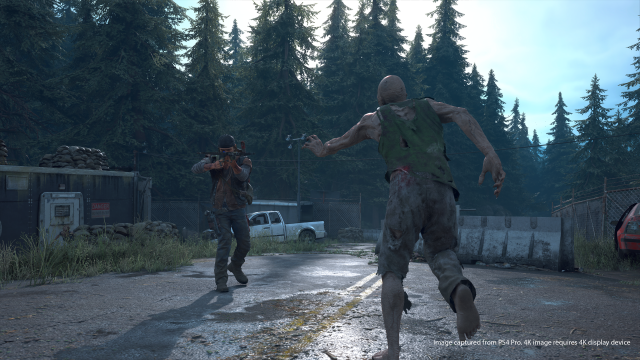
Melee weapons are found and can be upgraded through crafting. Base weapons include baseball bats, 2x4s, hatchets, fire axes and small pipes. Combining a baseball bat or plank of wood with nails or a saw blade will make them even more durable and effective, in similar fashion to the combo weapons found in Dead Rising. Make sure to know the health of your melee weapons, too, because they play a pivotal role in combat, and can be very helpful in taking out a small group of freakers. That’s especially true given the fact that sound can alert hordes, making gunplay a risk at times. They’re worse, and come in greater numbers at night, so it’s then that you’ll need to be most careful, especially later in the game.
I used melee weapons a lot, and found them to almost be preferable to guns. The stealth takeouts they offered were pretty brutal, and they packed a lot of punch in general. The only thing is that they break easily, and only last for maybe four enemies. After that, you’re left with your trusty knife, which can be used for stealth takedowns and even for melee, as well. It simply isn’t powerful, meaning that encounters take at least twice as long (and twice as many hits) against any type of enemy.
Speaking of enemies, it’s important to note that there isn’t just one type of freaker. During the first part of the game, you’ll come across typical adult freakers who are moderately strong and can often be found alone. Child-like ‘zombies’ will also be seen on top of gas stations, and on other roofs, as they protect their roosts and only attack when disturbed. They’re pretty easy to kill, too. It’s later on that more powerful creatures will appear, including a tank like beast and a screamer that can alert others. Animals also appear, and can be hunted for meat, which is worth money and trust at camps. These wolves and bears can become infected, though, making them much stronger and much scarier, too. Deer are the easiest target to kill and hunt, because they don’t normally attack. They need to be tracked, though, using Deacon’s hunting experience and tracking skills, which can be helpful during hunts and also when you’re looking for supplies. Press the right joystick in to trigger this.
Infected wolves will chase Deacon while he rides, and can appear at a moment’s notice. They can be killed by using shoulder buttons to both aim and shoot, with a reticle describing potential accuracy to the player. This mechanic also comes into play during bounty hunts, when Deacon must chase his target as the other person gets away on bike. Oftentimes, your target will have cronies who will also shoot at the player.
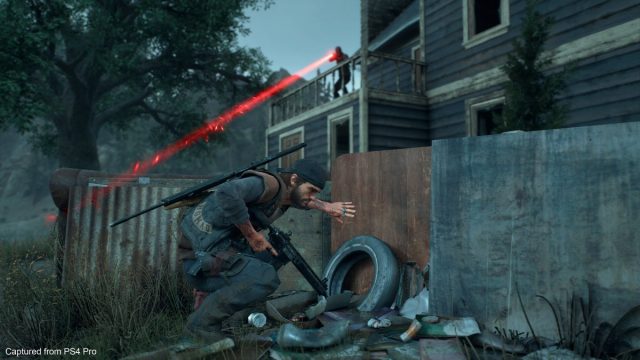
Ramming an enemy with your bike is also an option, and becomes a necessity when ammo is depleted (which can happen easily if you’re not careful). Doing so damages your bike too, though, especially if you use turbo. That said, Deacon’s bike — which he must build up from a junker, by earning trust at camps and unlocking new parts for purchase — often gets damaged, just from regular riding. If you hit anything, run over an enemy or crash, it’ll become damaged. Rough riding can also attribute, meaning massive jumps and things like that. Fixing the bike is pretty simple, however, because all it really entails is pressing circle while standing beside the chassis. So long as you have some scrap metal (which is found inside of abandoned cars, or simply on shelves and counters inside of buildings), you’ll be able to repair your ride — at least partway.
You’ll have to get used to looking after your bike, because it’s important. The thing can run out of gas, leaving you stuck and forcing you to walk it. It can also become severely damaged, making it unable to be ridden. Asshole enemies will also sometime shoot your fuel compartment out with sniper rifles as you drive by, forcing you to crash, ditch the bike and then fight two or three goons. Of course, taking the sniper out is also very important.
These human enemies can be found at random, and will also be seen during missions and at small camps of their own. There, it’s important to use stealth to take as many out as possible, before alerting them to your presence. Going in guns ‘a blazing makes things more difficult, as you can surely imagine, but health items generally aren’t in short supply. That is, so long as you pick up everything you find and can carry, and always have enough materials to make more bandages. Medkits are available, too, but they’re found and are kind of rare. I also found it very helpful to loot every (human) enemy I killed, because they’d often be carrying bandages or some component of them. If not, they’d usually have a Molotov or something else helpful.
Secondary and tertiary quests involve taking these camps out, by killing every one of their members. That, as well as burning the freaker nests, which are often found in public washrooms, old houses, ’empty’ gas stations and other run down constructions. You’ll also find yourself being called by the leaders of the camps, who’ll generally task Deacon with taking out deserters who’ve wronged them.
Days Gone implements a bit of strategy and slight moral dilemma when it comes to survivors, because Deacon receives different benefits from different camps. One may give you more credits and less trust, whereas another will offer a larger amount of trust (which leads into a leveling system that helps unlock new bike parts, weapons and consumables for purchase). This ends up making the player choose which camp(s) he or she favours, especially since they all have their own credit systems.
I personally felt bad about sending people to one camp, so I favoured the others. I preferred them for other reasons, but that was a big part of it.
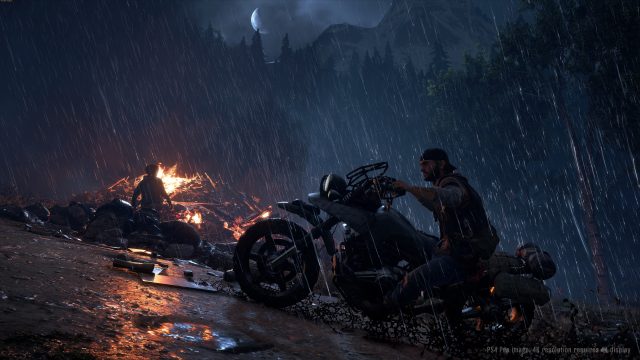
For the most part, Days Gone is a fun, immersive and entertaining game, that can be hard to pull away from. It’s addictive and easy to get lost inside of, though it does suffer from repetition and sometimes drags. The story is a lengthy one, too, and can sometimes drag itself despite being interesting. I was surprised to discover that it truly is about as long as advertised, as though it felt like I was putting great amounts of time into it, progress was a bit slow.
The above isn’t helped by how the campaign is structured. Its missions appear as part of varied storylines, which show progress by increasing their percentage of completion by varying amounts. I didn’t notice any other ways of tracking progress, and found the sheer amount of these storylines to be overwhelming. New ones would begin all the time, and the progress page wasn’t much help, because it just showed completion percentages for all the stories. It was overwhelming, and kind of confusing to be honest.
Expect to spend a lot of time listening to radio calls, being given missions and driving from one part of the rather large map to another in order to carry out your mission. There’s lots of riding to be done, over what is a pretty big representation of backwoods Oregon, and it’ll take a lot of gas to get everywhere. Thankfully, there are gas stations spread throughout the map, and jerry cans that can be used to refill your bike. Of course, upgrading your ride will also improve its gas mileage, but those upgrades take a while to unlock.
Running out of gas sucks.
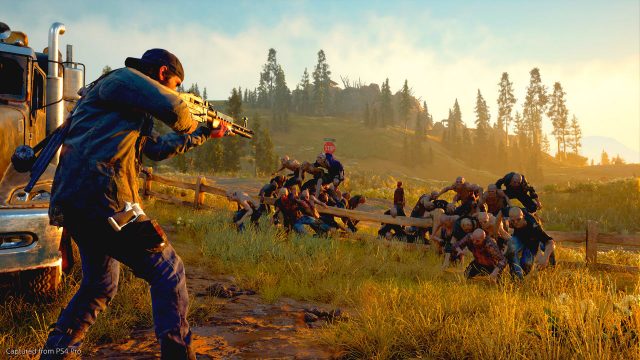
On the presentation side of things, Bend’s latest is unfortunately somewhat flawed.
I reviewed the game using our PlayStation 4 Pro console, and as I progressed further and further into its campaign I started to notice more and more slowdown while riding the bike. Everything looked good to great, but the performance left something to be desired, especially when I was riding quickly through certain sections. This issue seemed to appear during the same areas, but also looked to be affected by time of day and the amount of things going on. I also noticed a bit of slowdown while facing off against group(s) of freakers.
The only other notable glitch that I encountered came in the form of lack of audio. Specifically, one or two of the survivors that I saved from an onslaught of enemies moved their digital lips but didn’t actually utter any sound. I was used to them always saying something, like asking where the closest camp is, so it stood out when it happened.
Outside of the above, I was impressed with the visual and audio facets of Days Gone. This is a really nice looking game, with some rather impressive dynamic snow and rain effects, not to mention very detailed and believable characters. This is especially true of Deacon and Sarah, whose relationship feels very authentic as it plays out over some cute cutscenes that go back to the day that they first met. The first of these was really quite impressive, and is something that I will remember as a standout moment, not just for this game but the medium as a whole. It helps that the voice actors almost all do a really good job, and that the writing is of quality as well.
With all that having been said, I doubt I really need to spell out the fact that I enjoyed my time with Days Gone, and hope that it will do well enough to allow for a sequel. While it has some downsides, like frustrating stealth, heavy backtracking (despite limited fast travel), slowdown while driving and missions that sometimes drag, it’s a quality game that is fun to play and easy to get immersed within. I enjoyed its gameplay, liked its characters and kept wanting to play more, which is a great sign.
**This review is based on the PlayStation 4 exclusive, which we were provided with. Please note that we played the game as it was being patched.**

